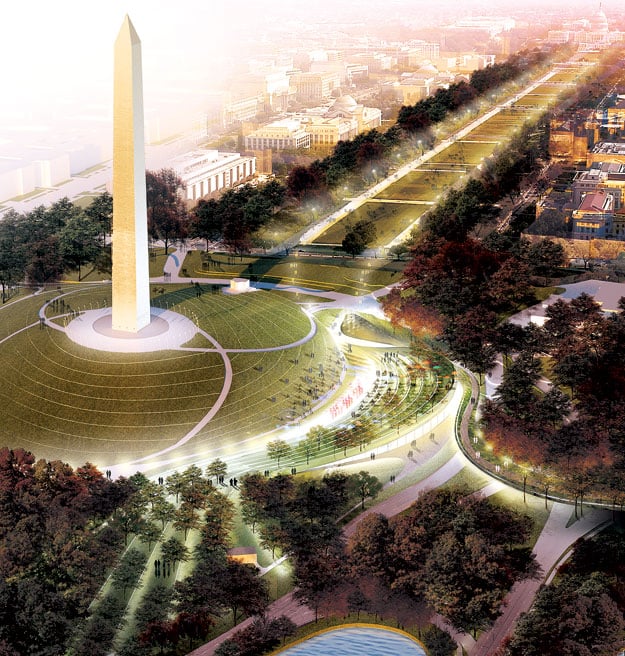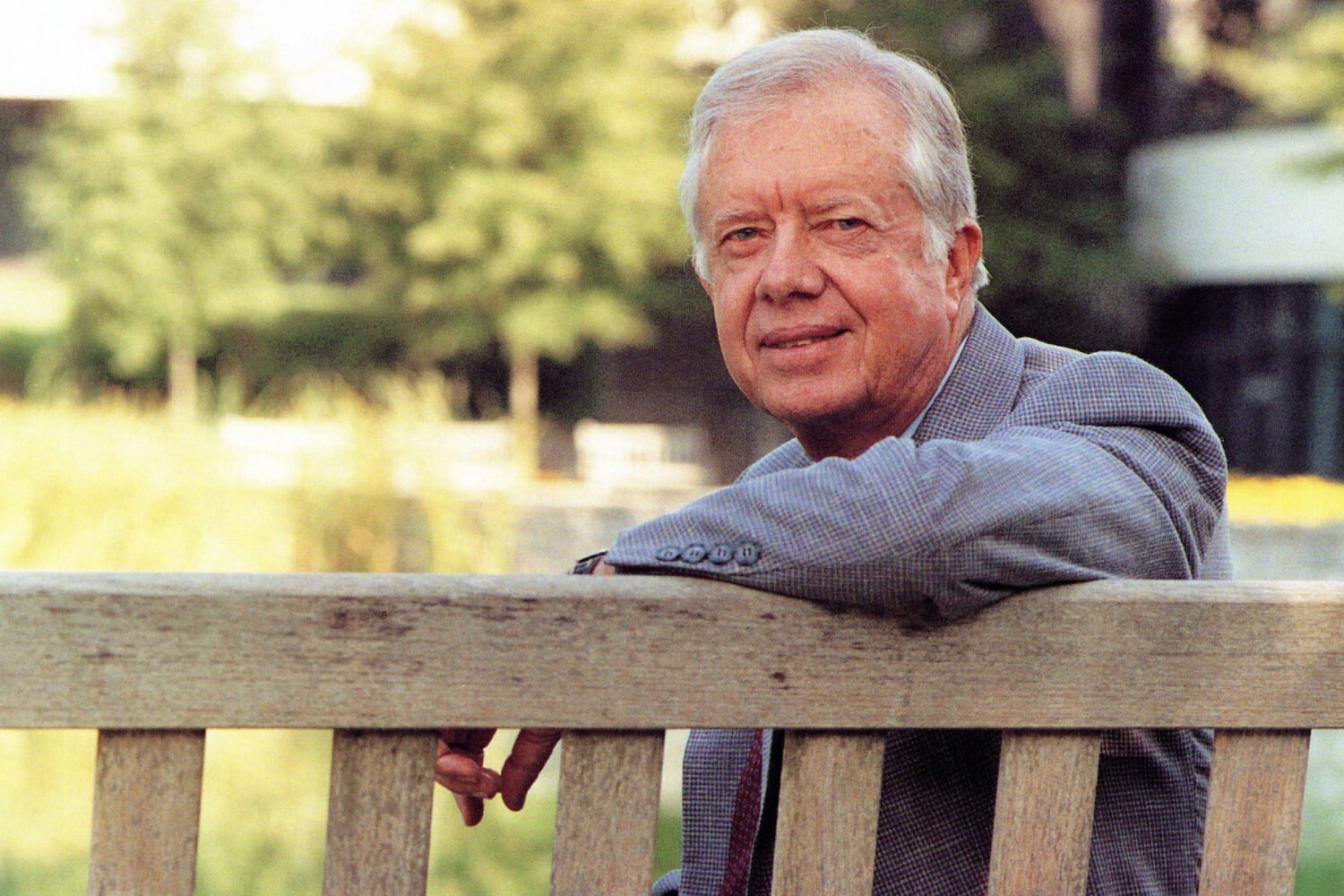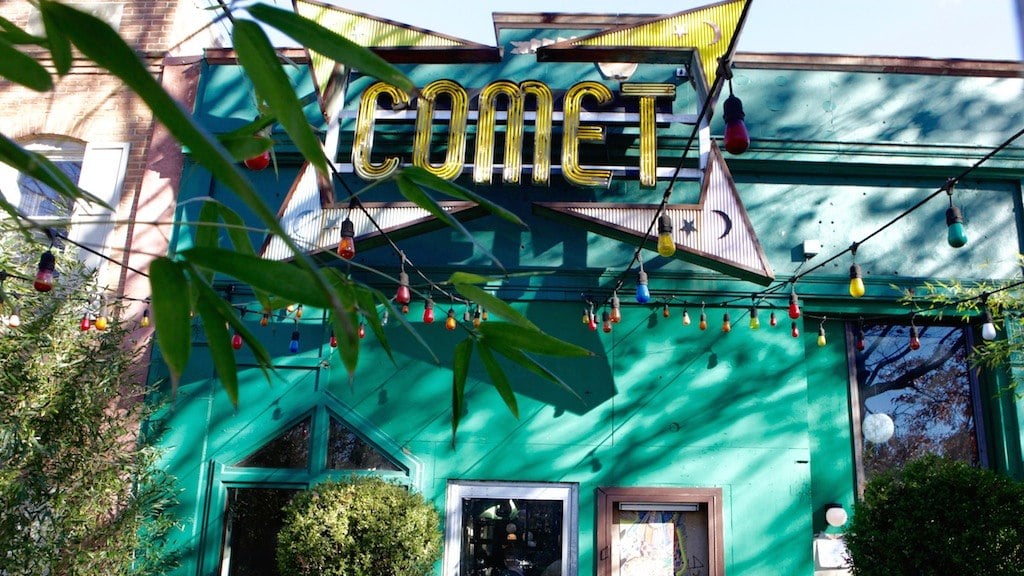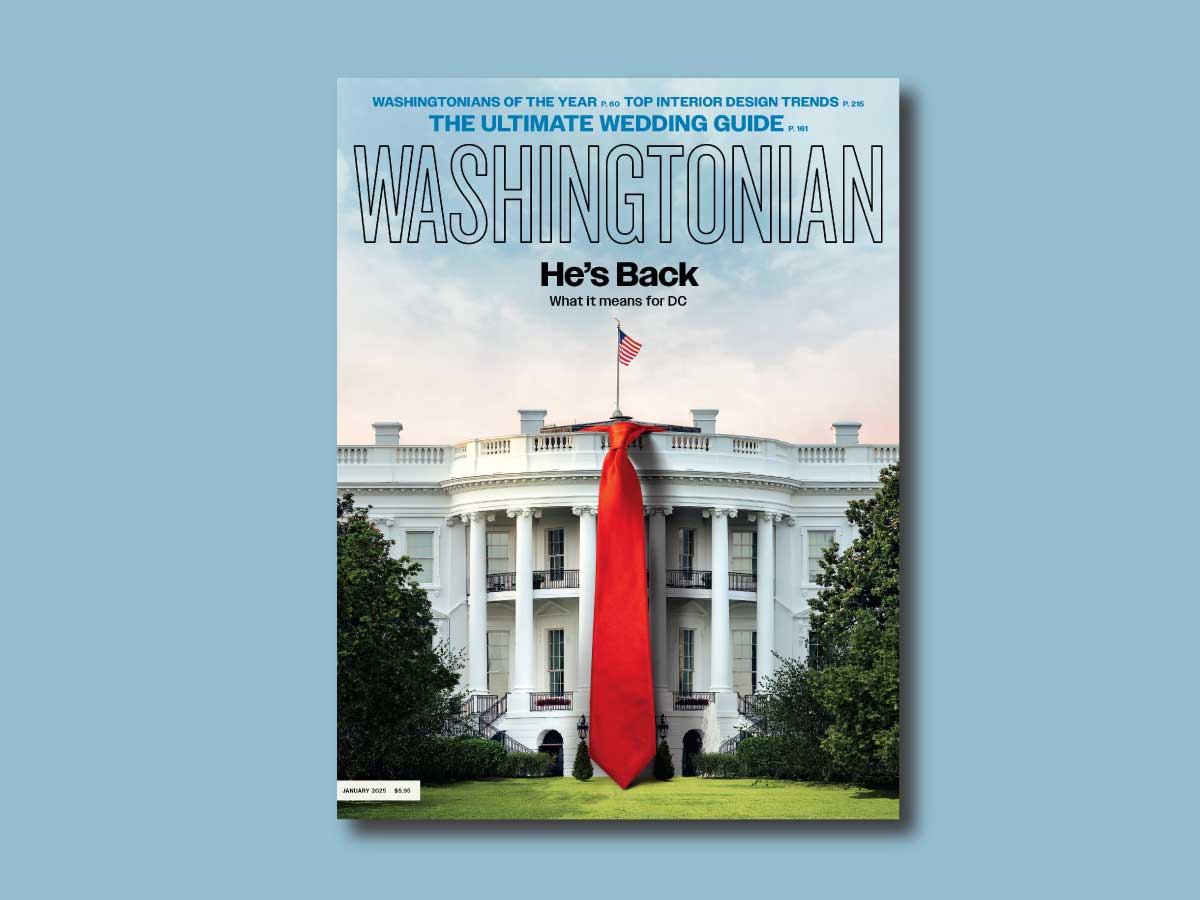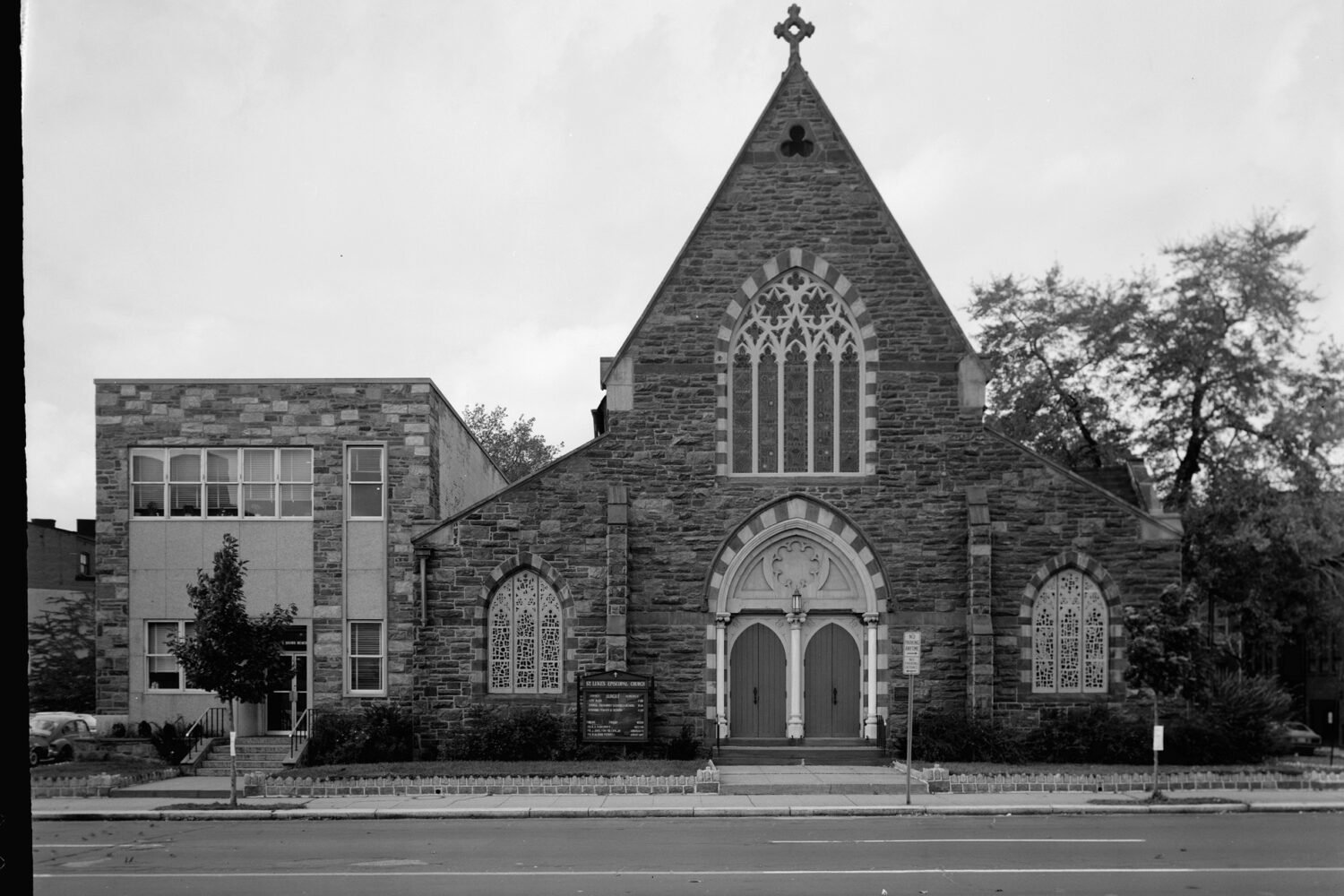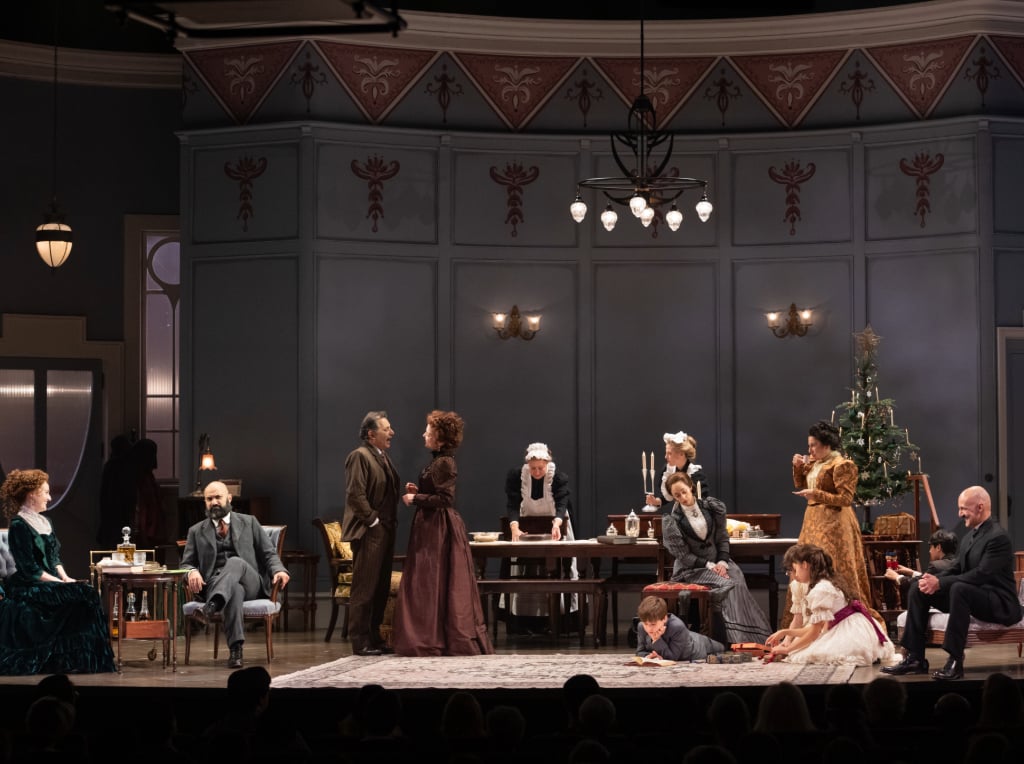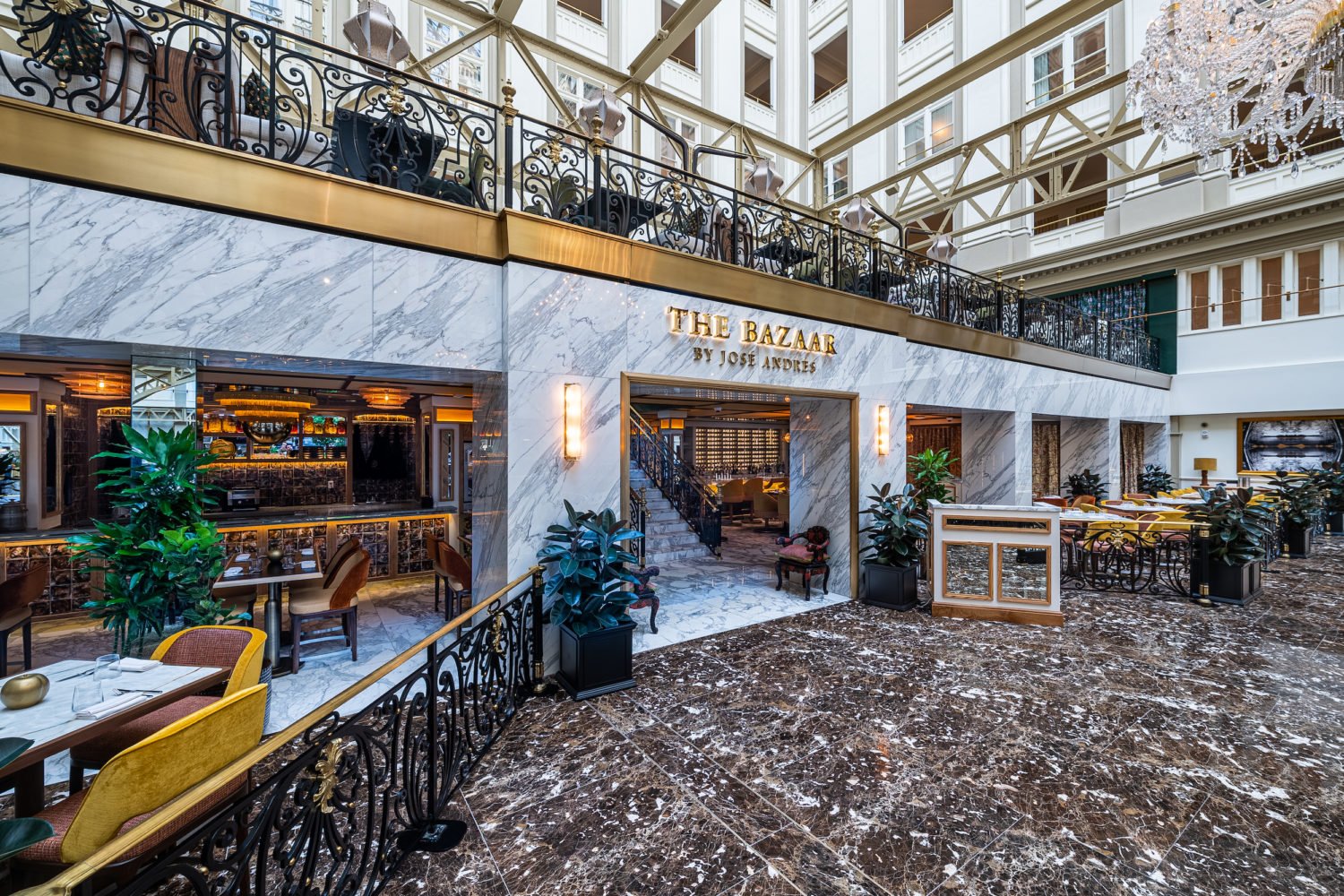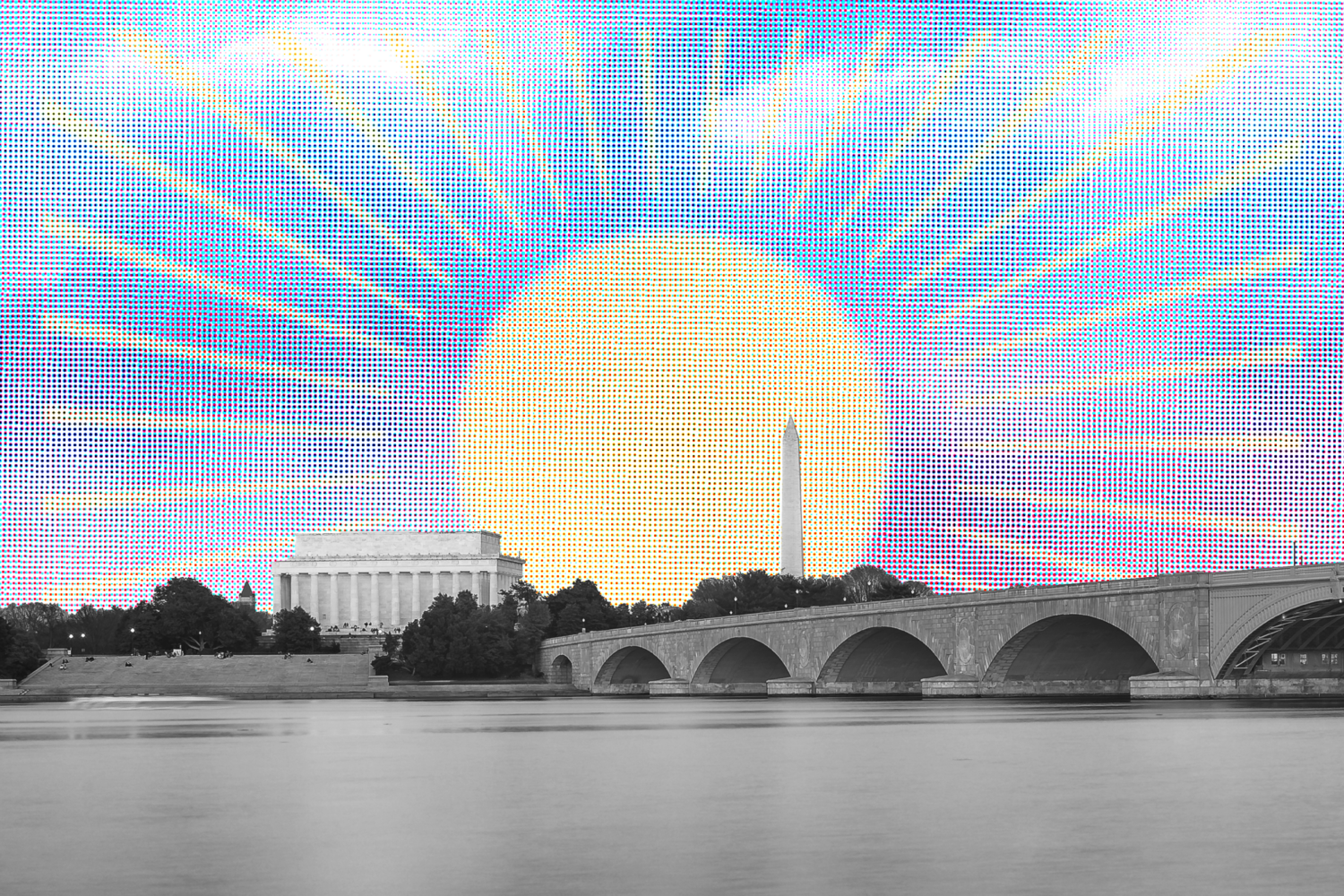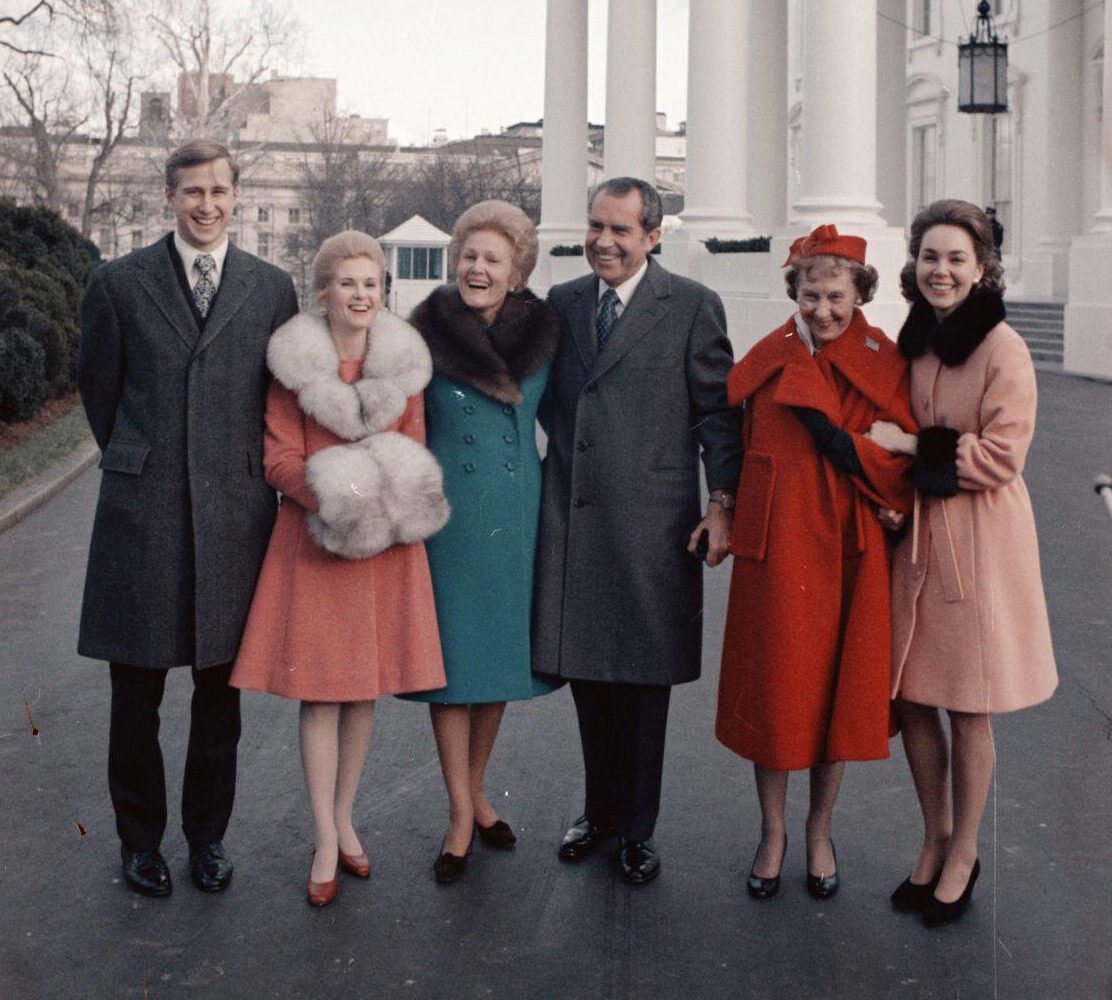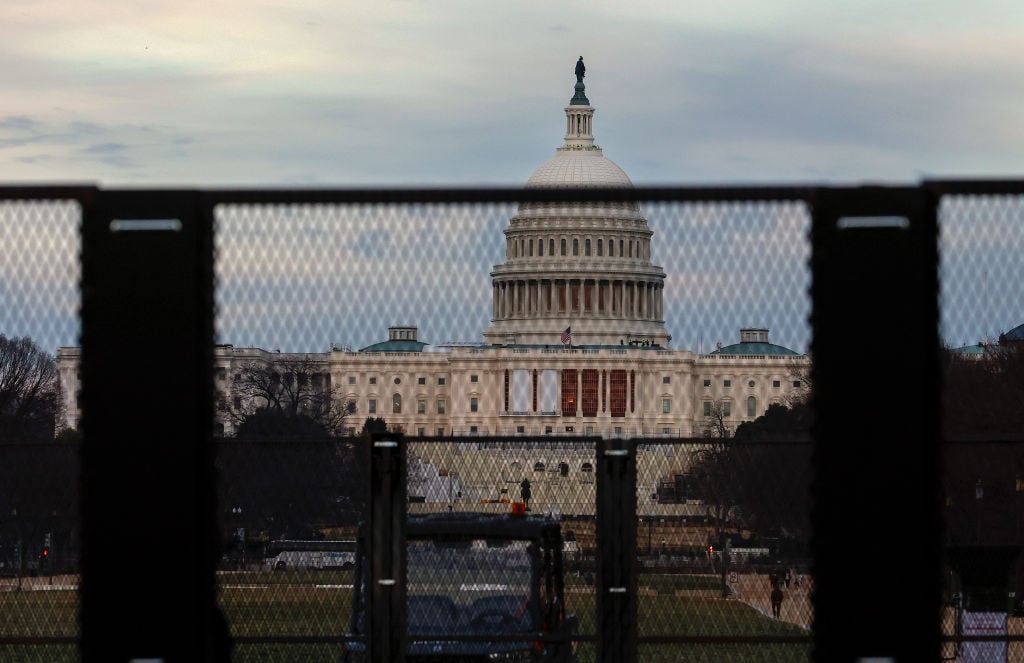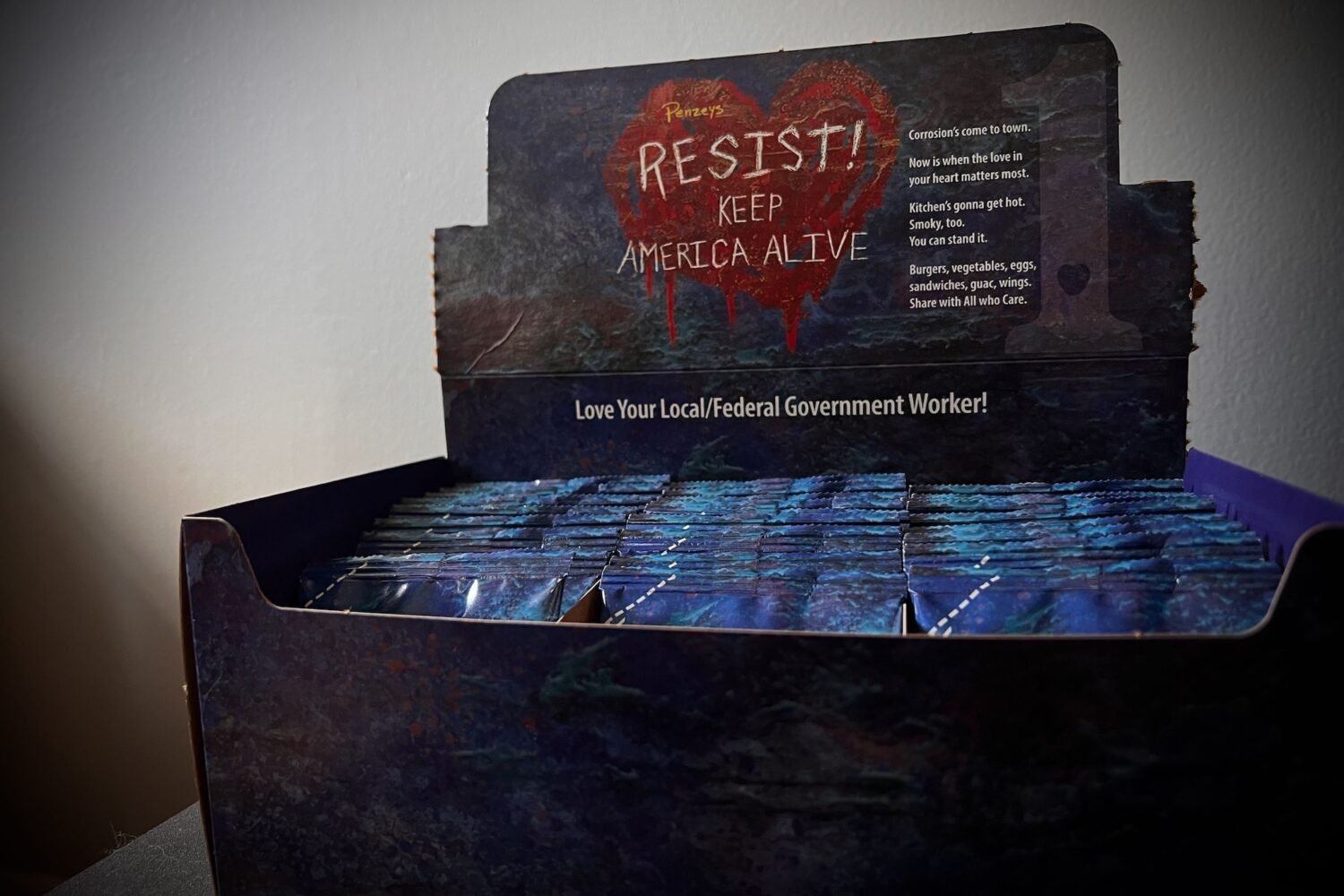One of the first things I noticed when I met Teresa Durkin was the stench drifting from the amoeba-shaped lake behind us. “What is that we’re inhaling?” I asked.
“It’s muck and duck poo,” Durkin said, stepping around puddles of day-old rainwater on the buckling lakeside pavement.
Durkin and I weren’t on the back stretch of some second-rate regional zoo but at more or less the center of the National Mall. Constitution Gardens, a 50-acre tract just north of the Reflecting Pool and the World War II Memorial, is advertised on National Park Service websites as “a living legacy to the founding of the republic.” A shabby island reachable by a short footbridge is, allegedly, a monument to the 56 signers of the Declaration of Independence.
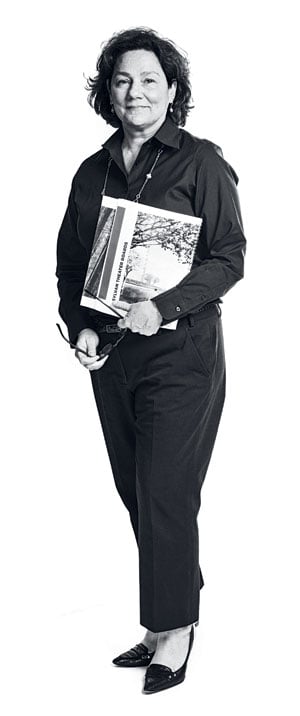
On the morning of our visit in early May, the dozen or so ducks plopping along the lake’s muddy banks outnumbered human visitors by about two to one.
“It’s not working,” Durkin said, shaking her head. “Either people don’t know how to get here or it looks like it’s under construction. From afar, it just looks like a place where ducks go. ”
Durkin, an award-winning, 58-year-old landscape architect, has become unusually well versed in the Mall’s design failings. The Trust for the National Mall, the DC nonprofit that is the Park Service’s official fundraising partner for Mall restoration projects, hired her in January as its first design professional after an extensive national search.
The Trust is much smaller than New York’s Central Park Conservancy, the nonprofit that’s credited with reviving Manhattan’s iconic park and now employs more than a dozen landscape designers and a large maintenance staff. But the Trust’s hiring of Durkin is a notable step in the Conservancy’s direction, a sign of its expansion from a group focused exclusively on fundraising to one with a growing voice on matters of design.
In some ways, it’s a big leap for Durkin, who previously toiled on decidedly unflashy projects such as stormwater-management plans for university campuses. But in other ways, it’s a logical next step for a woman whose ideas about the marriage of design and ecology have earned her larger and larger canvases.
The Trust’s aim is to restore “America’s front yard,” as the Mall has been called, from trampled mosh pit to American Eden. It’s a job Congress has been unwilling to fund. The National Park Service says the Mall needs $450 million in deferred maintenance and hundreds of millions more for design improvements. But the agency’s budget for the Mall and other DC parks, $32 million last year, has scarcely budged over the last decade, even as the number of monuments and memorials—Martin Luther King Jr., World War II—has grown.
“We’ve got to work with whatever Congress gives us,” says Carol Johnson, a National Park Service spokeswoman. “So to a certain extent, this”—the Mall’s rebirth—“is going to be on the Trust.”
The Trust was the brainchild of Georgina Sanger, who moved to DC in 2001 after the Manhattan start-up she worked for faltered during the dot-com bust.
“I’d lived in New York and seen the transition of Central Park into something really wonderful,” she says. The sunburned wasteland she walked through in her regular strolls along the Mall appalled her. With the help of well-connected family friends, she convinced John “Chip” Akridge III, a real-estate developer and now the Trust’s chairman, to underwrite a group that could raise money for improvements that Congress couldn’t—or wouldn’t—fund.
The Trust formed an official partnership with the Park Service and this past May unveiled the winners of a national competition to remake three of the Mall’s sorriest spaces: Union Square, the concrete expanse with the gargantuan reflecting pool at the western foot of the Capitol; the ill-conceived southern grounds of the Washington Monument; and Constitution Gardens.
With former First Lady Laura Bush as honorary chair, the Trust has pledged to raise $350 million. And fast. It wants to see at least one of the projects built by 2016, the centennial of the National Park Service. Durkin will serve as a liaison among the design teams, Congress, the Trust, and the Hydra of bureaucracies—most notably the Park Service, the National Capital Planning Commission, and the US Commission of Fine Arts—whose blessings are necessary for even slight alterations to the Mall.
She’ll vet drawings, help set up public meetings and technical workshops, and hold the high-powered design teams to deadlines, budgets, and a thicket of building regulations.
“I kind of stand between everyone,” she says. “A little fulcrum.”
In his 1791 plan for the capital, Pierre L’Enfant sketched a “Grand Avenue,” 400 feet wide and a mile long, that swept west from the “Congress House” to the Potomac River. The avenue, bordered by gardens and cultural institutions, was to meet a park leading north to the “President’s House.” The promenade would be an emblem of democracy, offering citizens of the new nation sweeping sightlines to its seats of power.
But President George Washington fired the temperamental L’Enfant in 1792, and the Frenchman’s vision languished.
The Mall we know today took shape at the start of the 20th century, when the Senate appointed such design luminaries as Daniel Burnham and Frederick Law Olmsted Jr. to a panel charged with realizing L’Enfant’s vision. The so-called McMillan Commission—named for its chairman, Senator James McMillan of Michigan—drafted a plan of rigid geometries, Beaux Arts buildings, and a defining central strip of grass lined with American elms.
What the commission didn’t foresee was how quickly the Mall would fall victim to its own popularity. The social movements of the 1960s turned it into a site of mass demonstrations. Concerts and festivals proliferated. More recently, legions of professionals settling in newly fashionable downtown areas have given the Mall a second life as a neighborhood park—twentysomething lawyers and journalists playing Ultimate Frisbee are as routine a sight these days as packs of eighth-grade tourists in matching T-shirts.
The result: The Mall is now the country’s most popular national park, drawing 25 million visitors a year, more than the Grand Canyon, Yosemite, and Yellowstone combined. It is also, arguably, its least inviting. There are 100 toilets for those 25 million people and few places to eat, sit, or cool off in the shade. The century-old sea walls around the Tidal Basin have sunk so far that a walkway between the Jefferson and FDR memorials is underwater twice a day. On hot, crowded days, the gravel paths churn up small dust storms. Many of the central grass panels have been so trampled that they better resemble the Sahara than sod.
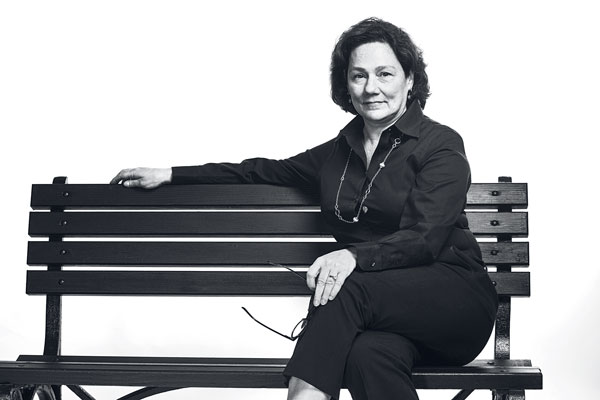
On the first day we met, Durkin was dressed in a black sweater, black tights, black pumps, and round-framed black glasses. But beneath the architect chic is a woman who writes articles with such titles as “Sustainable Architecture for Health: We All Live Downstream” and who cites Wangari Maathai, the Kenyan environmental activist and Nobel Peace Prize laureate, as a role model.
A few years ago, Durkin camped for a week with her adult daughter and two friends on Alaska’s Prince William Sound, where they listened to whale song and watched natural ice sculptures wash ashore.
“Four women out in the wild,” she says. “It rained every single day. But you simply didn’t care because it was so beautiful.”
Durkin fell in love with the wild, such as it was, as a girl in Philadelphia. Her grandparents, who lived next door, grew figs, tomatoes, and grapes on their acre of land. Durkin was two years old when she began toddling over to muck around in the gardens with her grandfather.
But there were detours on the way to a career in landscape architecture. Durkin dropped out of college and spent a dozen years in television. She produced ads for toy stores and restaurants and oversaw music-video shoots, including one for the J. Geils Band’s 1981 hit “Freeze Frame.” (“I hate that song now,” she says jokingly. “I only heard it 9 million times over the course of a week.”)
She was in her late thirties, with two daughters in elementary school, when she began thinking about the world she wanted for her children. “Everything you’re doing in film is temporary,” she says. “You’re building something for a day or an hour. It’s not a long-term contribution.”
Landscape architects, she says, see their projects through a vista of 100 years.
She enrolled at Temple University in 1990 and graduated magna cum laude with a bachelor’s in landscape architecture and a prestigious award from the American Society of Landscape Architects. She made an early mark at the pioneering “green” design firm Andropogon Associates, in Philadelphia, before moving to the international firm HOK, which recruited her to lead a new Land & Water Studio meant to infuse the company with an ecologically attuned design sensibility. The job gave her national reach, and she shuttled among HOK’s Atlanta, Chicago, and DC offices.
Her former colleagues at Andropogon and HOK say she excelled in the planning side of design—getting clients, architects, engineers, and regulators to see eye to eye, often by playing the role of patient teacher. José Almiñana of Andropogon recalls Durkin’s success at sorting out conflicts among dirt-bikers, horse riders, and pedestrians in a trails master plan for Philadelphia’s 9,200-acre Fairmount Park system.
Durkin was in her late thirties when she began thinking about the world she wanted for her children.
Durkin worked on master plans for the University of North Carolina at Chapel Hill, Howard University, and the Brooklyn Botanic Garden. She tweaked Yale’s Sterling Divinity Quadrangle and revived a neglected park on Long Island with woodland gardens, a forested pond, and a labyrinthine stone path. She takes pains to infuse her projects with environmentally conscious elements such as “green” roofs and rain gardens that filter pollutants and recycle stormwater on-site rather than send it to the sewers.
Though she spends most of each week in Washington, she continues to teach ecological restoration at Temple, commuting between an apartment in Chevy Chase and the house she shares with her husband, Ed Buffman, a television director and cameraman, outside Philadelphia.
“For me,” she says, “every project is an opportunity not only to make a landscape beautiful but to also make it more sustainable.”
I asked experts, advocates, and government officials how the Mall had fallen into such disrepair. The answers were wide-ranging: Congress’s chronic underfunding of the National Park Service, the service’s failure to advocate for itself, high turnover among Mall superintendents, lack of public awareness.
There’s also apathy. The monuments and museums remain such a draw that visitors are willing to overlook the Mall’s sclerotic connective tissue. There are many national parks but only one Washington Monument. So what if food is scarce and there are dead fish in the lake?
Durkin first visited Washington in the eighth grade. Ford’s Theatre made an impression—“Very morbidly, I just kept staring at the balcony,” she says—but perhaps tellingly, the Mall did not.
Later, when she visited with her children, she felt lost and overwhelmed. “It’s hard to get around. Lots of traffic. It’s confusing. If you’re from out of town, you better have a GPS,” she says. She’s never been a fan of crowds. “I’m sensitive to designing comfortable places where people don’t feel trapped.”
In her college years at Temple, her professor won a design competition for a new fountain at the US Botanic Garden. As an exercise, he asked students to dream up their own plans for the west front of the Capitol. It was the early 1990s, and Durkin’s team envisioned an underground visitors’ center with a “green” roof—not unlike the one that opened on its east front 15 years later.
At the Trust’s offices in Federal Triangle, Durkin led me through the recent contest’s winning designs. The reflecting pool at Union Square would be shrunk to a more appealing scale and crossed by paths that create an illusion of walking on water. Wooded terraces would shade visitors, and the stretch of Pennsylvania Avenue north of the plaza, now a parking lot, would become a pedestrian promenade.
On the southern lawn of the Washington Monument, a visitors’ center and cafe would be tucked under a rise in the sloping grass. The current Sylvan Theater, a brown box wedged against a stand of trees, would be replaced by a Sylvan Grove Amphitheater framed by terraced lawns. Audiences would face the monument rather than turn their backs to it, as they do now.
At Constitution Gardens, designers would deepen the bowl around the lake for a stronger sense of enclosure and build a glass-walled restaurant cantilevered over the lakefront walk. In winter, a reflecting basin at the lake’s east end would give way to a glittering ice-skating rink.
The man who oversaw the Trust’s design contest was a Portland, Oregon, architect named Donald Stastny, who had previously managed competitions for the Oklahoma City National Memorial, the Walt Disney Concert Hall in Los Angeles, the Alaska State Capitol, and the Flight 93 National Memorial in Pennsylvania.
When I caught up with him in May, outside a lunch at which the contest winners were announced, he told me that nothing less than the face of American democracy was at stake. “This is our showplace for the world,” he said. “It demonstrates the idea of the United States. If we don’t take care of it, the impression is we don’t care. It’s that simple.”
In four years, the Trust has raised $10 million—a far cry from its $350-million goal. Caroline Cunningham, the Trust’s president, told me that having the designs in hand will accelerate fundraising, which is focused now on wealthy individuals and corporations but will eventually spread to ordinary Americans.
The Trust’s race for cash is apt to be harder than the Central Park Conservancy’s. The Mall may be America’s symbolic front yard, but Central Park, surrounded by some of Manhattan’s most desirable real estate, is an actual front yard to a not-small number of America’s 1 percent.
If a corporate titan contributes to the Conservancy, it may well improve the views from his living-room window and the paths along which his children walk the dog. When I asked the Trust’s Cunningham what donors got for their gifts to the Mall, she said, “The thanks of a grateful nation.”
I wondered how Durkin’s idealism would play out on a landscape with as many stakeholders as the Mall, even if you left out the 300-million Americans who claim it as a national birthright. Would she crusade for good design over the crasser considerations of politics, tourism, and public opinion?
“It wouldn’t serve me well to be an advocate for one thing—then I’d just be another discordant voice at the table,” she says. “My ego isn’t in defending a design. It’s in getting it built.”
But already the pace of progress in Washington has forced a recalibration. In Durkin’s first week at the Trust, Cunningham mentioned that the US Park Police horse stables needed an overhaul.
“I was out of there like a shot,” Durkin says. She took an architect with her and blithely strode through a fenced construction area and past a do not enter sign. The Park Police had no idea she was coming, but after she explained her mission, they gave her a tour and an hourlong audience with a sergeant. Back at the office, she learned that her bosses’ sense of urgency wasn’t quite the same as hers. “I’m like a fireman,” she says. “If you tell me, ‘We want to get this thing done,’ I will run out and try to do it immediately.”
What she’s discovered about Washington is that “they didn’t really mean today but in the next year or so,” she says, laughing. “I’m always reminding myself of that.”
Contributing editor Ariel Sabar is the author of Heart of the City, a book about New York City’s iconic public places.
This article appears in the August 2012 issue of The Washingtonian.

